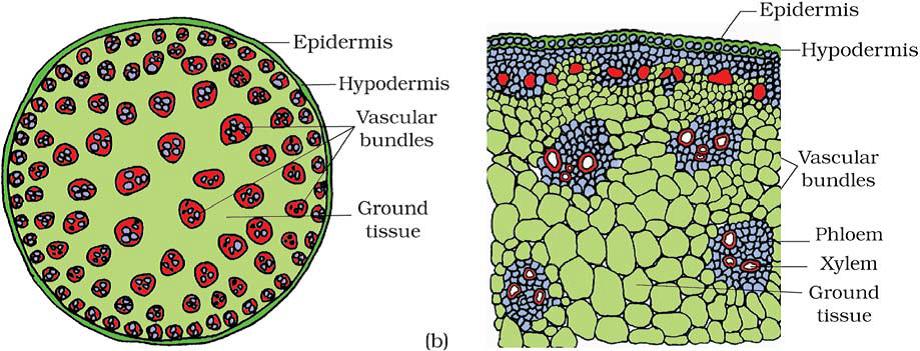The Dicotyledonous Stem
The epidermis of the dicot stem forms the covering of it. Epidermis acts as the protective layer for the stem. The cuticle will consist of trichomes and stomata. The layers that are present between the epidermis and pericycle is called the cortex. The cortex is divided again into hypodermis, thin walled parenchymatous layer and endodermis. Hypodermis occupies the outermost layer of the cortex which constitutes collenchymatous cells. These cells are known to provide mechanical strength to the stem. The layers of cortical cells that are present below the hypodermis are thin walled parenchymatous having large intercellular spaces. The innermost cortical layer is called endodermis. The endodermal cells consist of mostly starch grains and the inner layer is also considered as starch sheath.
The inner side of the endodermis is present a layer called pericycle. The pericycle layer is present above the phloem and comprises of semi-circular patches made of sclerenchyma cells. There are parenchymatous cells found in between the vascular bundles radially distributed known as medullary rays. Several vascular bundles are arranged in the form of a ring in the dicot stem. Every vascular bundle in the dicot stem is conjoint, open and endarch as they have proto-xylem arranged in this pattern. Numerous round and parenchymatous cells possessing big intercellular spaces occupy the central part of the stem that is called as pith. Dicot stem is picturized in figure a and monocot in figure b.
Monocotyledonous stem
The monocot stem consists of hypodermis that is made up of sclerenchyma cells. Numerous scattered vascular bundles that are surrounded by sclerenchyma bundle sheath are present with a distinct parenchymatous ground tissue. Vascular bundles are described as conjoint and closed. The centrally placed vascular bundles are small in size compared to the peripheral ones. The phloem parenchyma is not present and the vascular bundles comprise of the water containing cavities.


No comments:
Post a Comment